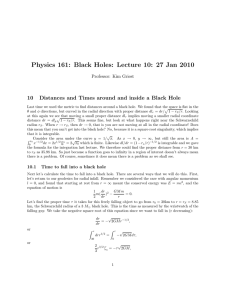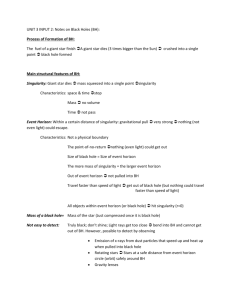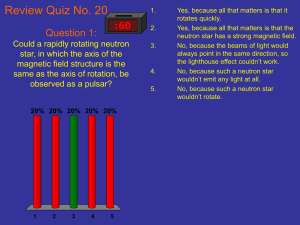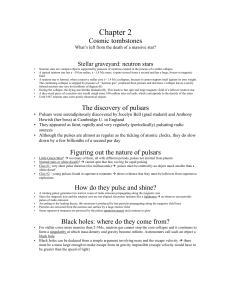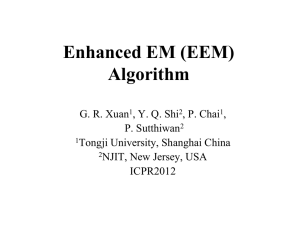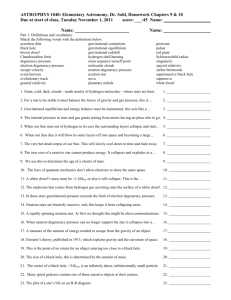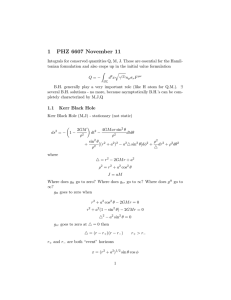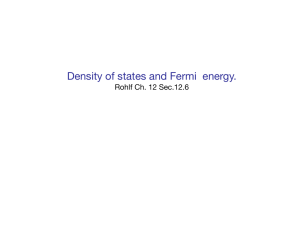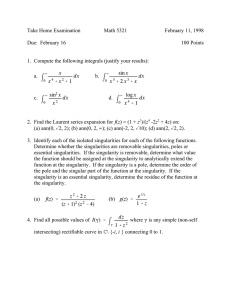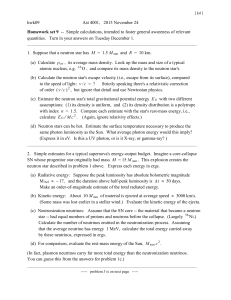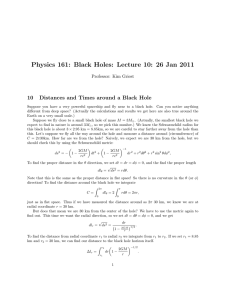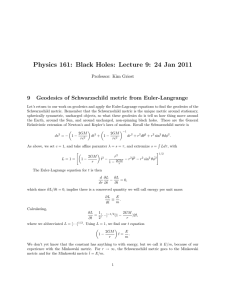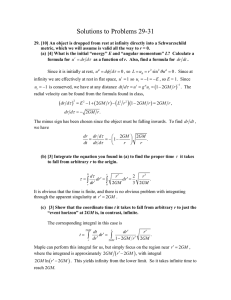GENERAL RELATIVITY
advertisement
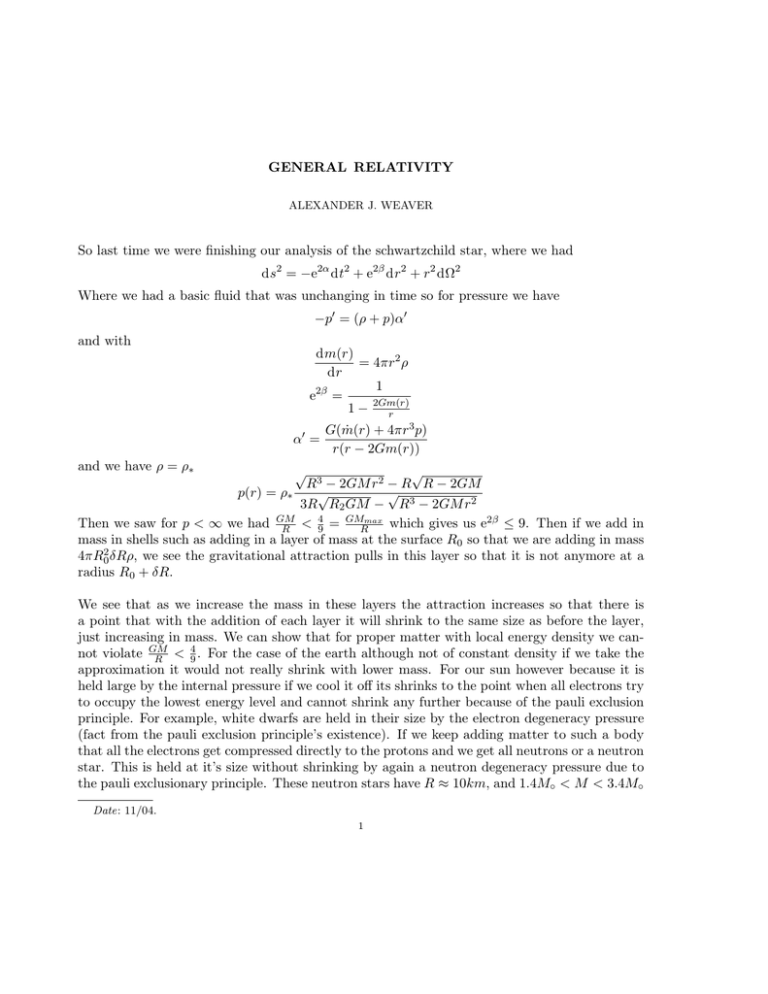
GENERAL RELATIVITY ALEXANDER J. WEAVER So last time we were finishing our analysis of the schwartzchild star, where we had ds2 = −e2α dt2 + e2β dr2 + r2 dΩ2 Where we had a basic fluid that was unchanging in time so for pressure we have −p0 = (ρ + p)α0 and with dm(r) = 4πr2 ρ dr 1 e2β = 2Gm(r) 1− r α0 = and we have ρ = ρ∗ G(ṁ(r) + 4πr3 p) r(r − 2Gm(r)) √ √ R3 − 2GM r2 − R R − 2GM √ p(r) = ρ∗ √ 3R R2 GM − R3 − 2GM r2 GMmax 4 Then we saw for p < ∞ we had GM which gives us e2β ≤ 9. Then if we add in R < 9 = R mass in shells such as adding in a layer of mass at the surface R0 so that we are adding in mass 4πR02 δRρ, we see the gravitational attraction pulls in this layer so that it is not anymore at a radius R0 + δR. We see that as we increase the mass in these layers the attraction increases so that there is a point that with the addition of each layer it will shrink to the same size as before the layer, just increasing in mass. We can show that for proper matter with local energy density we can4 not violate GM R < 9 . For the case of the earth although not of constant density if we take the approximation it would not really shrink with lower mass. For our sun however because it is held large by the internal pressure if we cool it off its shrinks to the point when all electrons try to occupy the lowest energy level and cannot shrink any further because of the pauli exclusion principle. For example, white dwarfs are held in their size by the electron degeneracy pressure (fact from the pauli exclusion principle’s existence). If we keep adding matter to such a body that all the electrons get compressed directly to the protons and we get all neutrons or a neutron star. This is held at it’s size without shrinking by again a neutron degeneracy pressure due to the pauli exclusionary principle. These neutron stars have R ≈ 10km, and 1.4M◦ < M < 3.4M◦ Date: 11/04. 1 with 2.0M◦ being the maximum known mass of the neutron star. The final state is the black hole. So if we start with reasonable objects but use perturbations we can see as we increase mass we get this fluctuating body but when we get to the point when a mass increase doesn’t cause a radial increase we get an instability. So from the start, when the minimal sized star collapses we get white dwarfs, (called typed 1), as we add in more mass until it becomes unstable again we get a supernova and the collapse to a neutron star. This is all we will go over from chapter 5, we are now getting into chapter 6. In order to truly understand the black holes again we revisit the schwartzchild blackhole. Just a side note, we see when two white dwarves spiral around each other and merge cataclysmic things happen, it causes other things to happen. For the schwartzchild black hole we have dr2 2M 2 dt2 + + r2 dΩ2 ds = − 1 − r 1 − 2M r IN the four quadrant picture, with I being when r > 2m initially, II and IV being the stages with 2m > r, and finally III being the other r > 2m, we see that for a particle in region two the longest proper time it can take to get to r = 0 is something like πM G/c3 . We define the even horizon of the black whole to be the boundary of a future null infinity. The boundary of our regions are called skry plus and minus which we write with $ which our future and past null infinities, the boundary on I with the skry plus is just J − ($+ ). Now from the white hole side there is a naked singularity, or one that we should technically be able to see. Either way, either singularity, inside the black or white hole, will be within the even horizons. The first idea, which governs if a singularity is naked or not, is the cosmic censorship hypothesis (from Penrose), which gives us 2 conditions. The first is that if there is non singular initial data, and the second is that there is a dominant energy conditions. We can prove that no naked singularities occur when these two conditions aren’t meant. There are many other singularity theorems, mainly proven/formulated by Hawking or Penrose. One of these has the requirements that both there is a strong energy condition and that there is a trapped surface then this implies either closed timelike curves OR we have a singularity in the geodesics (they form incomplete integral curves). Hawking Area theorem requires the weak energy condition as well as the cosmic censorship requirements will tell us that the area of the event horizon under physical processes cannot shrink, only grow. 2
